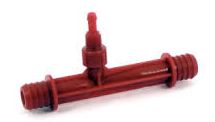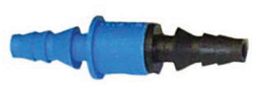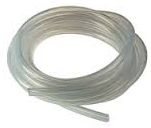Spa & Hot Tub Ozone Problems
Ozone is one of the world's most powerful sanitizers - over 200 times more powerful than chlorine. But one day your spa ozonator will quietly quit working.
Spa ozone is produced in a small ozonator underneath the spa cabinet, and it is delivered to the water by a small hose that carries the O3 gas to an injector fitting, where it is sucked into the spa plumbing.
But, over time, ozonator output decreases, and after a few years, it's time for a renovation or replacement of the ozone generator.
Is My Spa Ozonator Working?
When released into the water, ozone immediately begins to kill contaminants in your spa - when it's working. But, how do you know if the ozone is working, or if it's time for a new spa ozonator?
- Fine bubbles in the tub, from the ozone line, a steady stream of fine 'champagne bubbles' entering the spa.
- Spa ozonators have a power indicator light, which may mean that ozone is being produced.
- When you lift the spa cover, you may be able to briefly smell ozone that has gassed-off.
- If you remove the ozone hose from the check valve, you should be able to smell the ozone.
- Water quality deteriorates when ozone is no longer being produced, requiring more chemicals.
- Is your unit past its prime? Ozonators all lose effectiveness and fail after a few years.
- UV ozone bulbs last about 2-3 years, less if cycled on/off frequently
- Del MCD-50 CD chips last 3-5 years, Del CDS Spa Eclipse models last 2-3 years
Clogged Ozone Injector
Mazzei Ozone Injectors are the point of entry for the ozone gas, a venturi tee manifold, shown here. The injector draws in the ozone, mixing it with the water, where sanitation begins immediately. Injectors have an internal check valve for one-way flow only - ozone can enter the injector, but water cannot exit. If water comes out of the injector cap, or enters the ozone hose - this indicates a clogged or damaged injector check valve.
If an injector becomes clogged with debris, gunk or scale, it will block the small amount of ozone gas pressure. To clean an ozone injector, remove the hose, and ream out the injector with a piece of wire or a very small screwdriver. Vinegar can also be used to help dissolve scale deposits. A new ozone injector will eventually be needed, if the injector is leaking water into the hose.
Broken Ozone Check Valve
A second, inline check valve is used on many spa ozone systems, to prevent water from backing up through the hose, and getting into your ozone unit. This is installed between the ozonator and the injector manifold. Check valves are one-way flow devices, designed to only allow gas (or water) to flow away from the unit.
Over time, ozone check valves can become stuck, or blocked by gunk or scale, much like the injector problem discussed above. Del ozone recommends replacing their in-line ozone check valves (shown here) every year. Cleaning a check valve with vinegar can remove deposits, but be sure that the one-way valve is still doing it's job. You should be able to easily blow air through it, but only in one direction.
Damaged Ozone Tubing
The tubing, or hose that carries the ozone from the ozonator to the injection manifold will deteriorate over time. Clear ozone/air hose often becomes yellowed and brittle from the ozone, and will eventually split, requiring replacement.
Inspect your ozone hose often, from end to end for degradation, discoloration or cracking. Del recommends that ozone tubing be replaced every year, to prevent unexpected failure. Also inspect the barbed connections on the end of the hoses. Too much pressure can cause these to crack, and leak ozone.
Expired Spa Ozonator
Finally, the ozone generator itself may have expired. There are two types of spa ozonators, UV and CD. Most spa ozonators have an indicator light, but they don't usually have a failure light, so take note of manufacturer replacement recommendations.
Spa ozonators using UV, or ultraviolet light to produce ozone, will need a new UV bulb after a certain number of operational hours, usually 8000-10000 hours. Most UV ozone bulbs will still turn on, or light-up, but no longer produce the wavelengths needed to create ozone, so remember to replace the UV bulb on schedule.
CD, or corona discharge ozonators, will require a new chip or electrode every 3-5 years, to maintain ozone output. Del sells renewal kits for their larger CD ozonators, and it's quite a simple repair. Newer spa ozonators by Del, such as the MCD-50 and the Spa Eclipse are now so affordable and long lasting, the entire unit is replaced, including hose and check valve (included).
Spa Ozonator Maintenance
Maintaining a spa ozonator is not difficult, once you know what to look for. The most important thing is to replace the ozonator or ozone parts (hose, check valve, bulb, chip) on a schedule, to prevent damage to the ozonator, and poor spa water conditions.
Your spa ozonator probably won't make it known that there is a problem - you have to go looking for it. Remember, eventually (2-3 years), your spa ozonator will quietly quit working one day. Maintain your spa ozonator to keep your spa sanitary.



